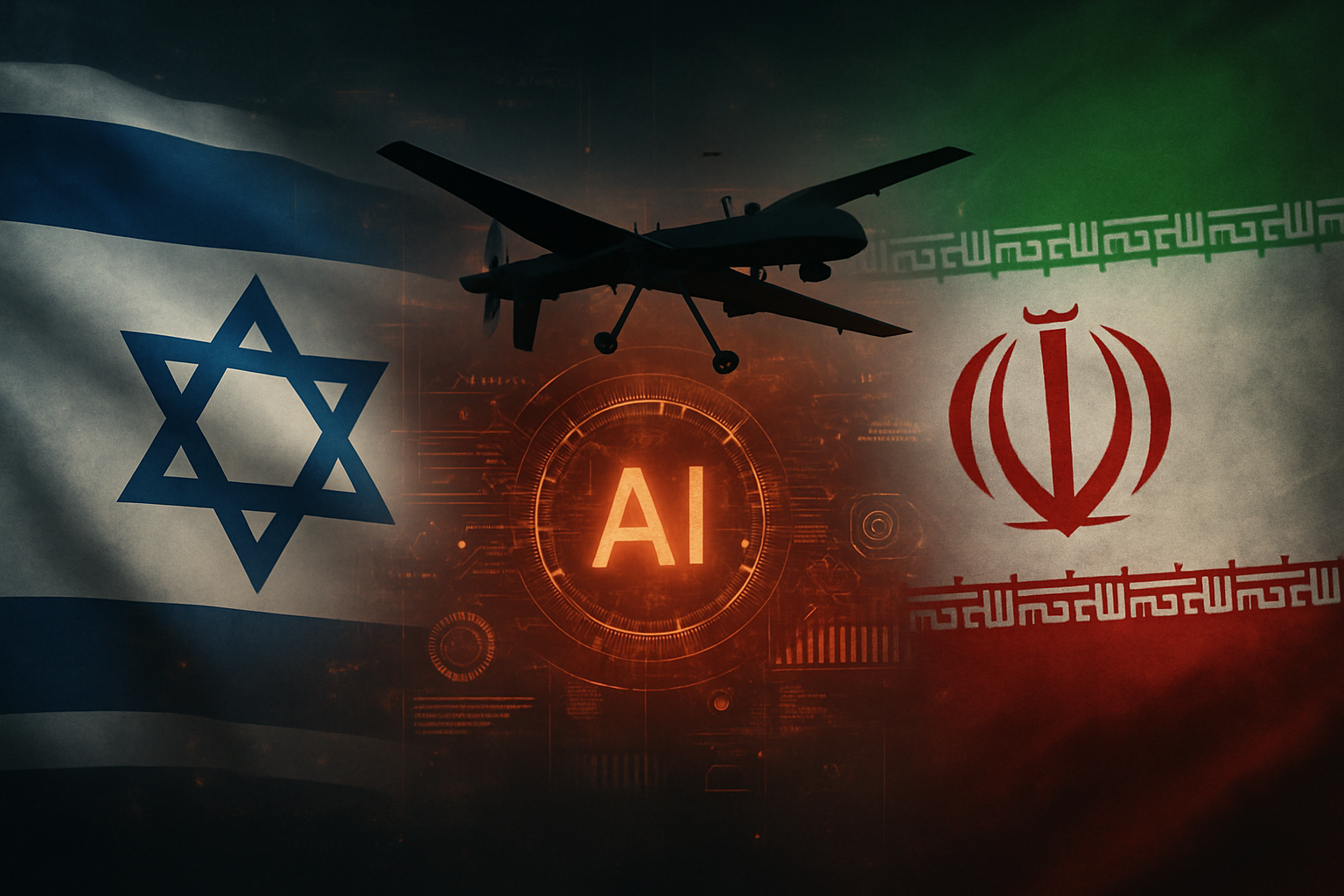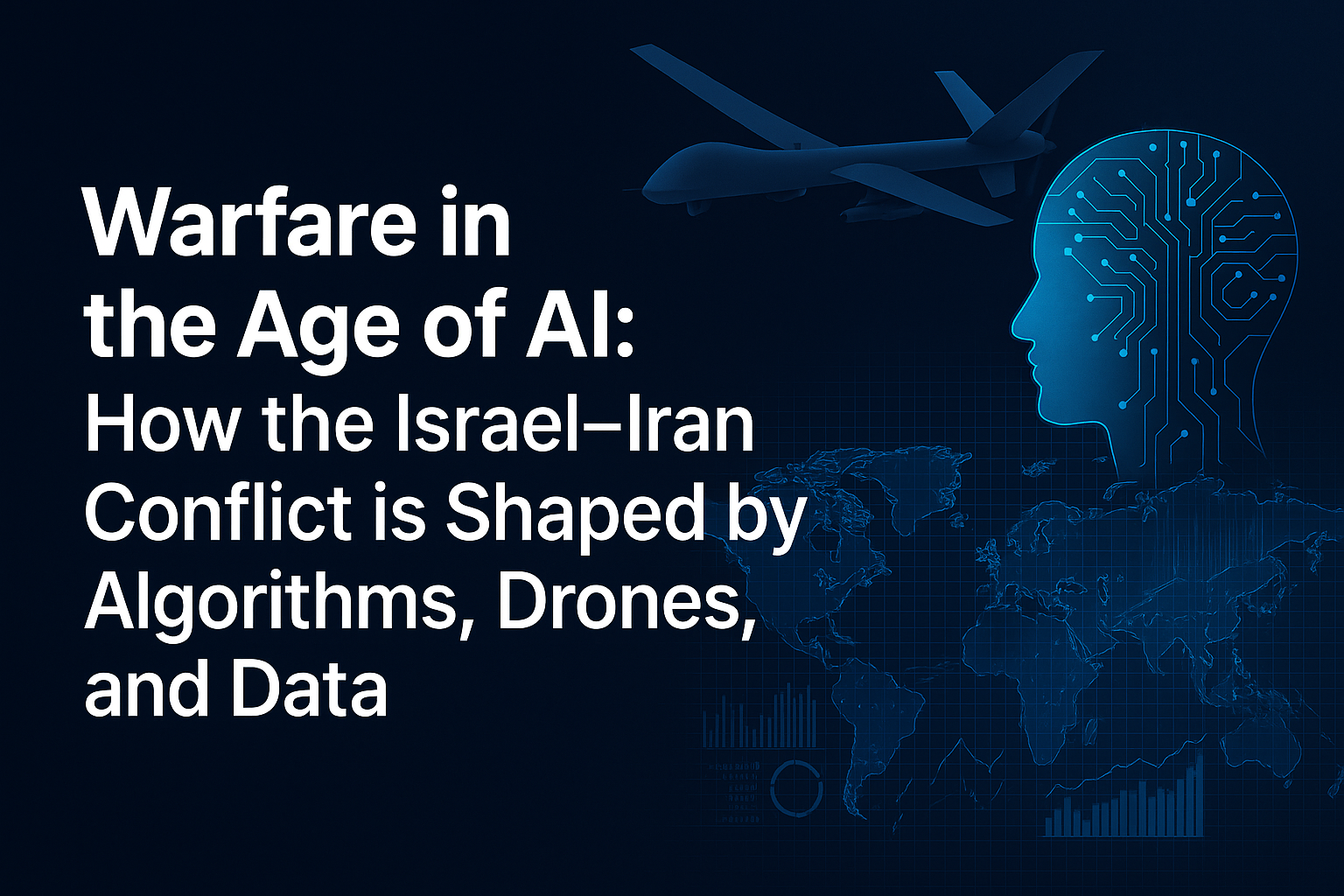- by Zlata Seregina Akkaoui
- Jun 08, 2025
The Next Strike Won't Be Nuclear—It'll Be Algorithmic: How AI Could Launch the Next Middle East War
- By Mohammed Akkaoui
- Sep Fri, 2025
- in News

Forget missiles. The next war in the Middle East may start with a corrupted dataset, a deepfake broadcast, or an autonomous drone deciding to strike without human input. As tensions escalate between Israel and Iran, the real threat might not come from a missile silo but from a line of code. This article explores how artificial intelligence, data manipulation, and automated military systems could provoke or even initiate the next regional war.
1. Autonomous Warfare: When Machines Decide Both Israel and Iran have invested heavily in autonomous systems. Israel’s AI-enhanced weapons, like the "Gospel" and "Lavender" systems, have been used to suggest and execute military targets with limited human oversight. Iran has responded with its own drone and cyber fleets, capable of loitering, decision-making, and targeting independently.
What happens when these systems interact in unpredictable ways? Could a machine misidentify a radar signal and initiate a retaliatory strike? The possibility is no longer theoretical.
2. AI Misinformation as a Weapon AI-generated deepfakes and synthetic media are now sophisticated enough to impersonate world leaders in real-time. A convincing video of an Iranian general declaring war, or an Israeli leader announcing a nuclear strike, could spread across social media in minutes—causing mass panic or preemptive military response.
With AI models trained on geopolitical data, misinformation campaigns can now be hyper-targeted and emotionally optimized. The battlefield is no longer just physical—it’s psychological.
3. Predictive Algorithms: Risk or Asset? Military strategists increasingly rely on predictive models to anticipate enemy moves. These systems consume vast amounts of data—from troop movements to oil exports to satellite patterns. But what happens when one country’s AI predicts a false flag operation or assumes a missile strike is imminent?
In a region already on edge, bad predictions can become self-fulfilling prophecies. A faulty AI model could literally guess a war into existence.
4. Code Red: The Dangers of Escalation by Automation Unlike traditional warfare, algorithmic escalation is faster, colder, and often invisible. Systems operating at machine-speed can outpace diplomatic channels. By the time humans intervene, it might be too late.
A simple network breach, misinterpreted as an act of war, could set off a chain reaction across autonomous defense platforms on both sides. The fog of war now has a digital layer—one that moves too fast for accountability.
5. Global Implications: How This Could Spiral Beyond Israel and Iran The U.S., Russia, and China are watching closely—and quietly building similar capabilities. If a regional skirmish begins with AI, the aftermath won’t be regional. NATO's AI-enhanced early warning systems, China's cognitive electronic warfare, and Russia's battlefield AI prototypes could all be pulled into the algorithmic vortex.
The world isn't prepared for a machine-initiated World War. But the fuse has already been coded.
Conclusion The idea of an AI launching a war used to belong to science fiction. Today, it’s dangerously close to science fact. As Israel and Iran edge toward confrontation, the most terrifying catalyst isn’t nuclear. It’s digital. And it might already be online.
Keywords:
AI war Israel Iran, algorithmic warfare, deepfake military crisis, Middle East conflict AI, autonomous weapons Israel, AI defense Iran, cyber warfare 2025, future of war AI



